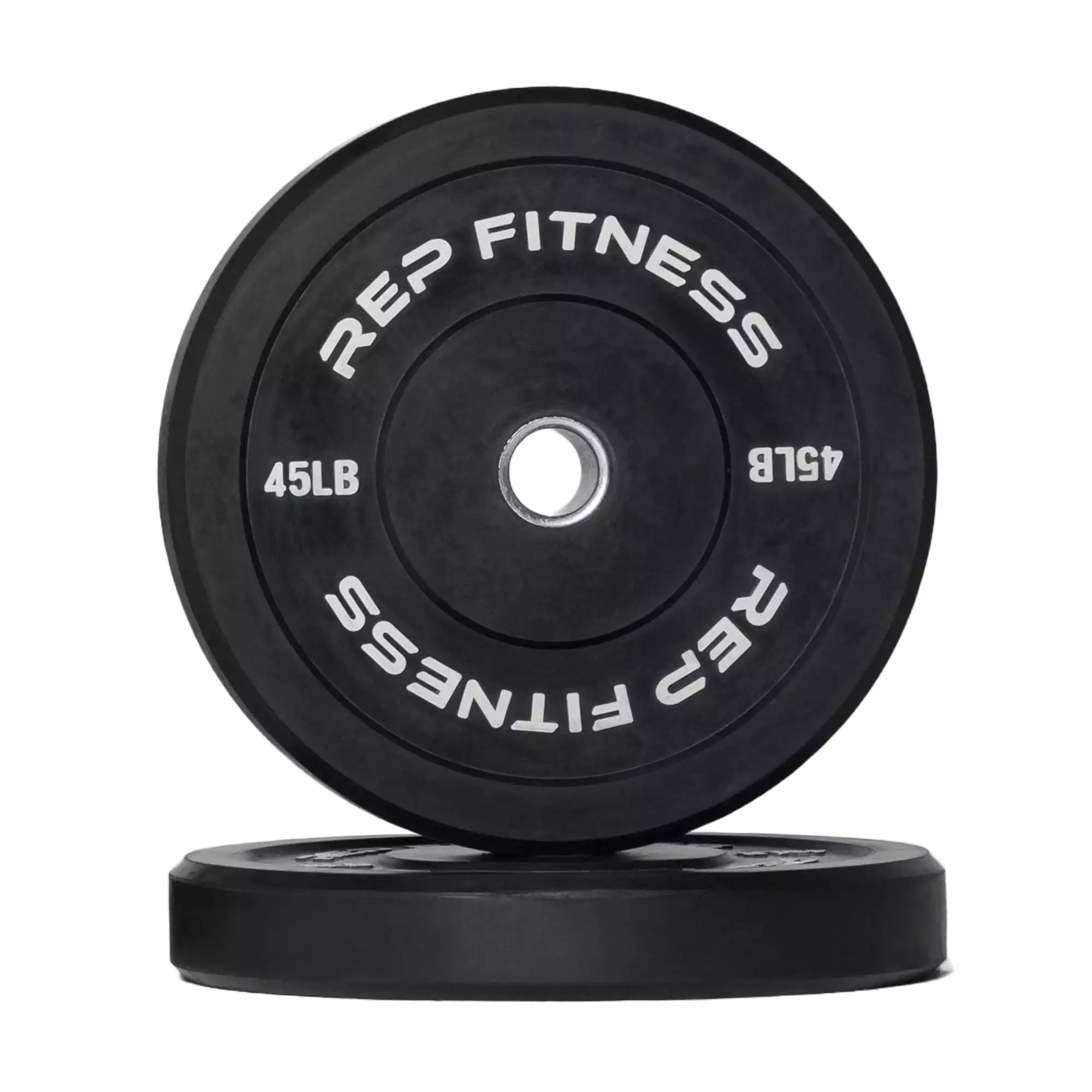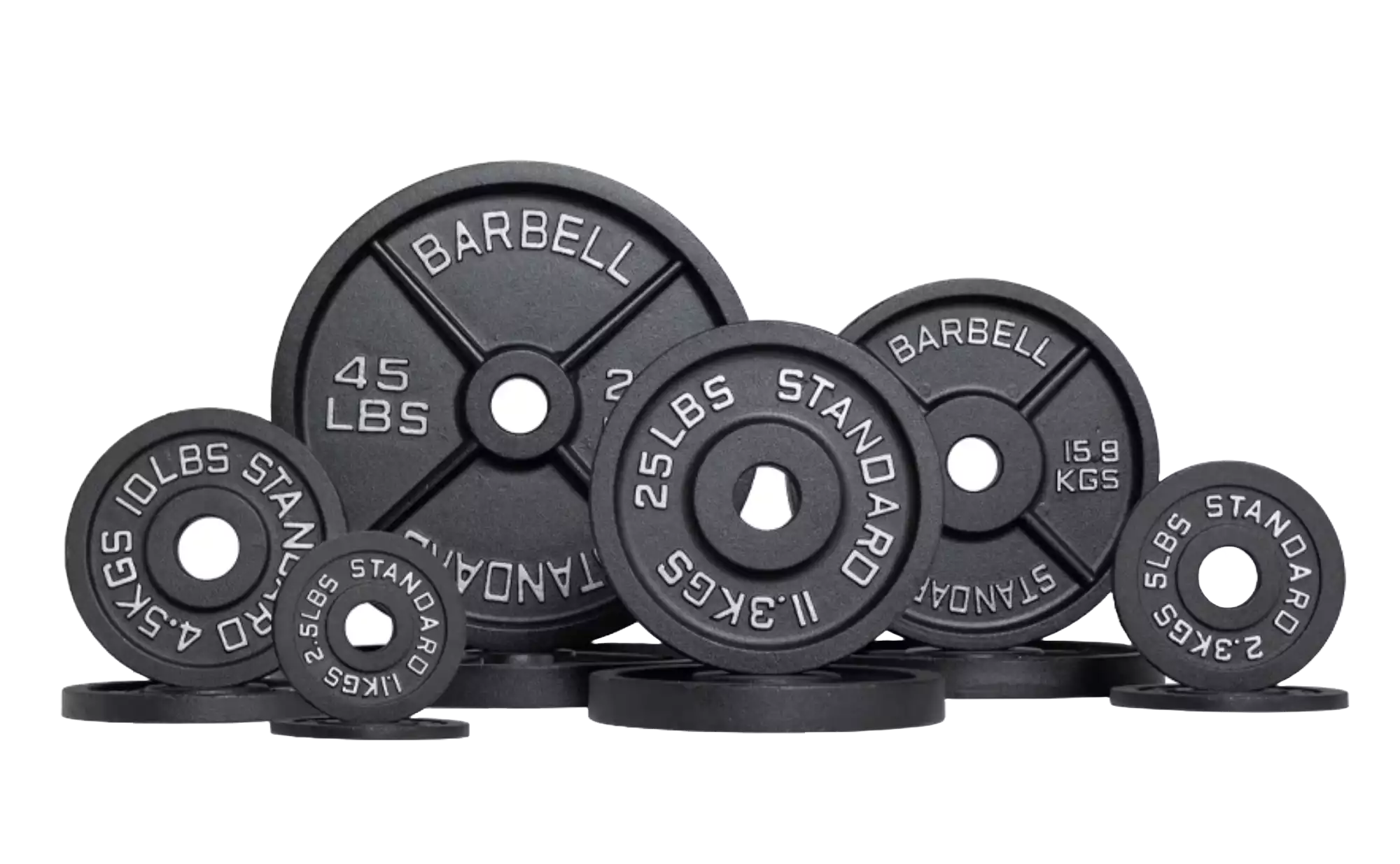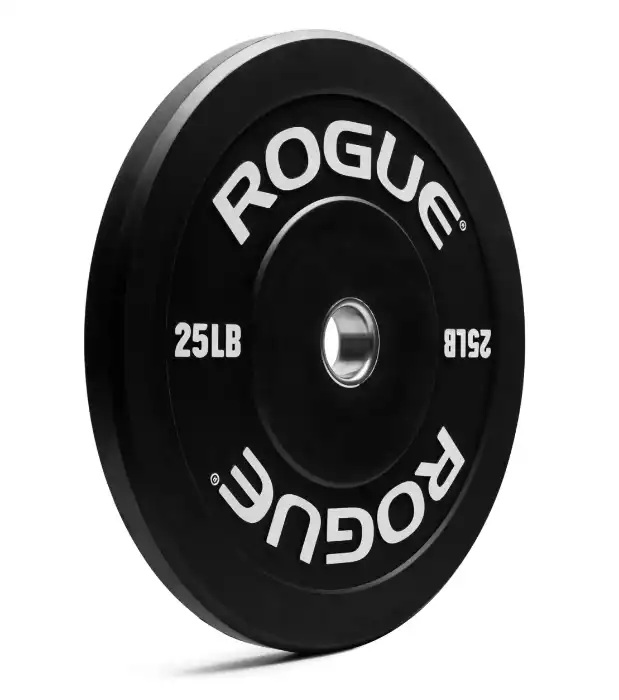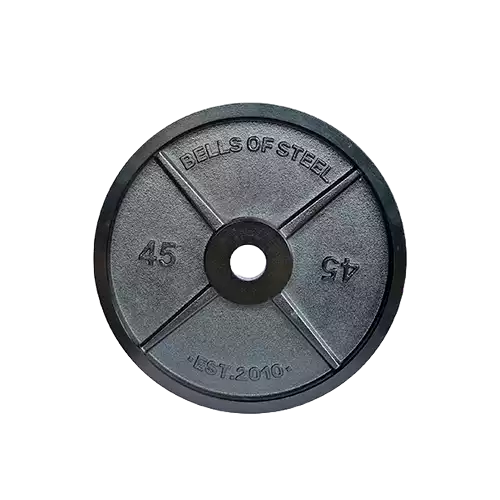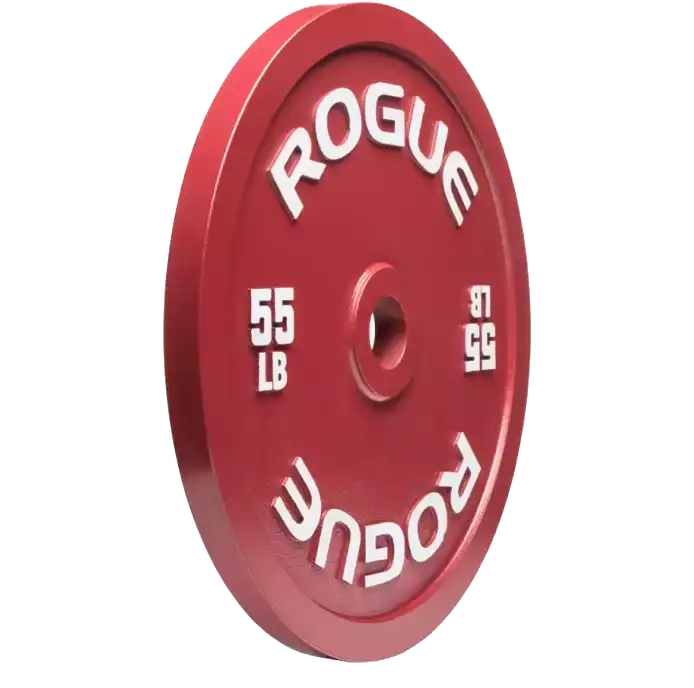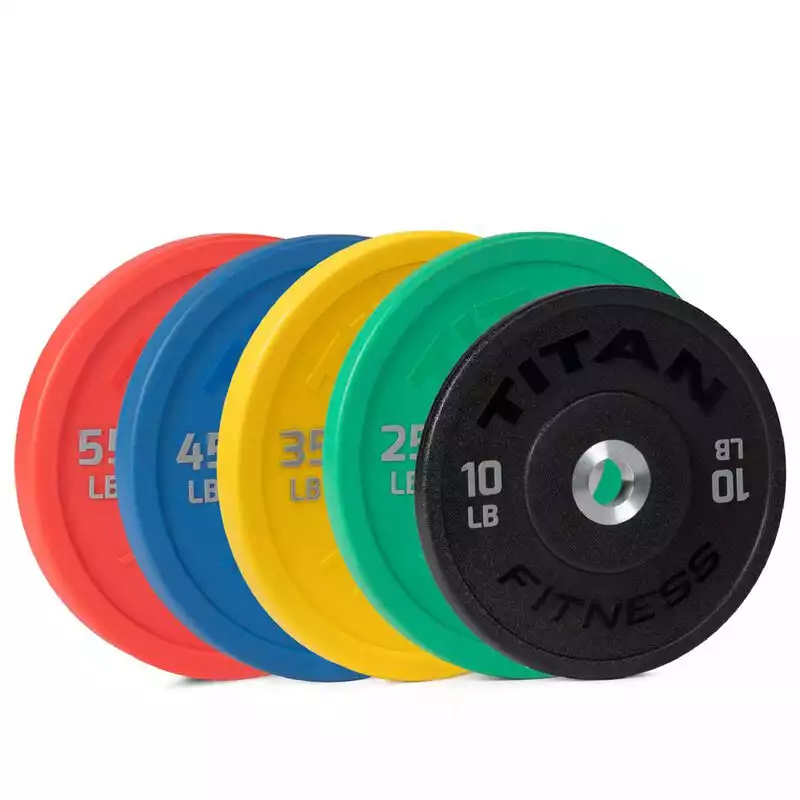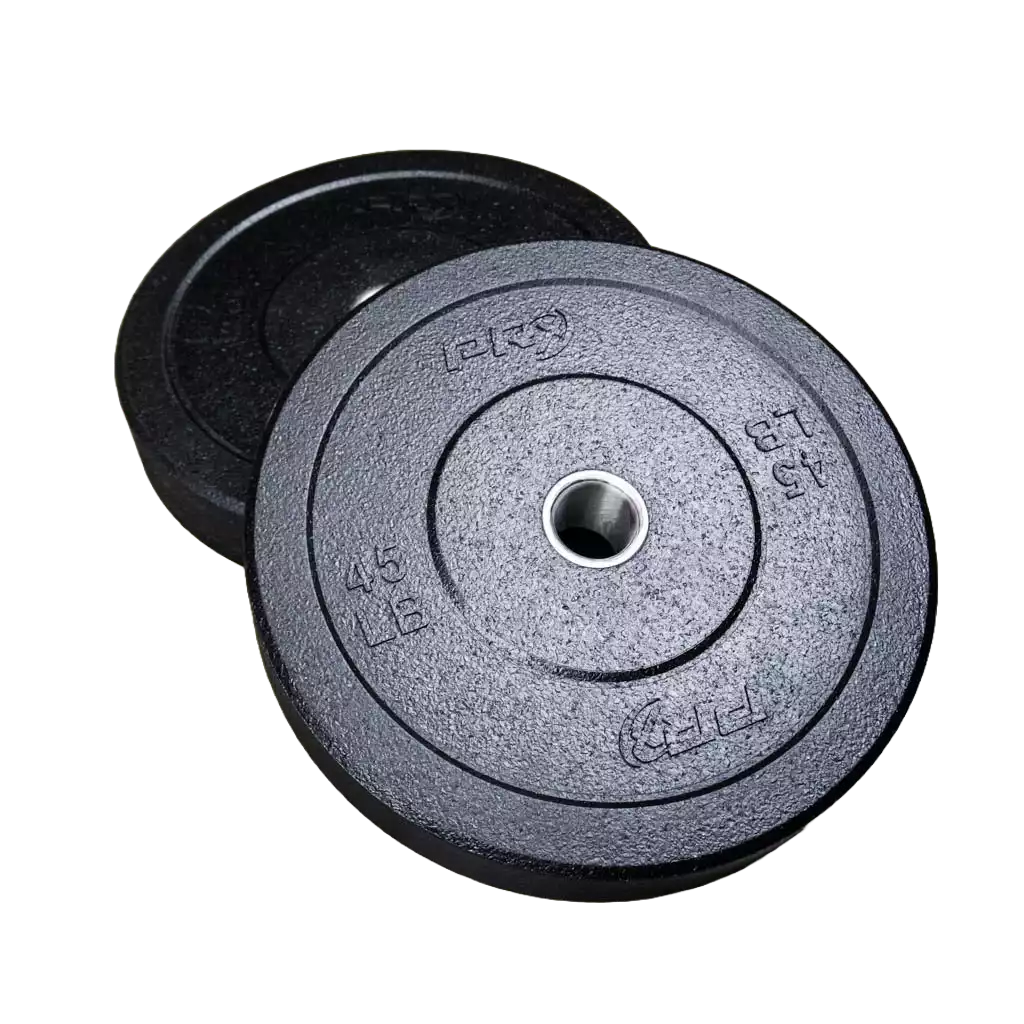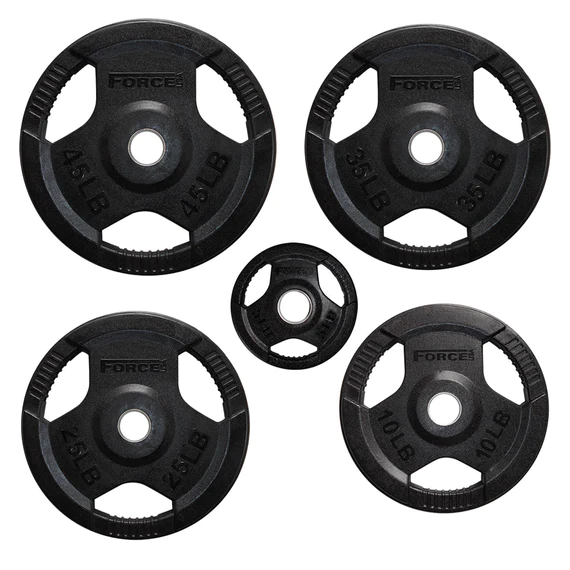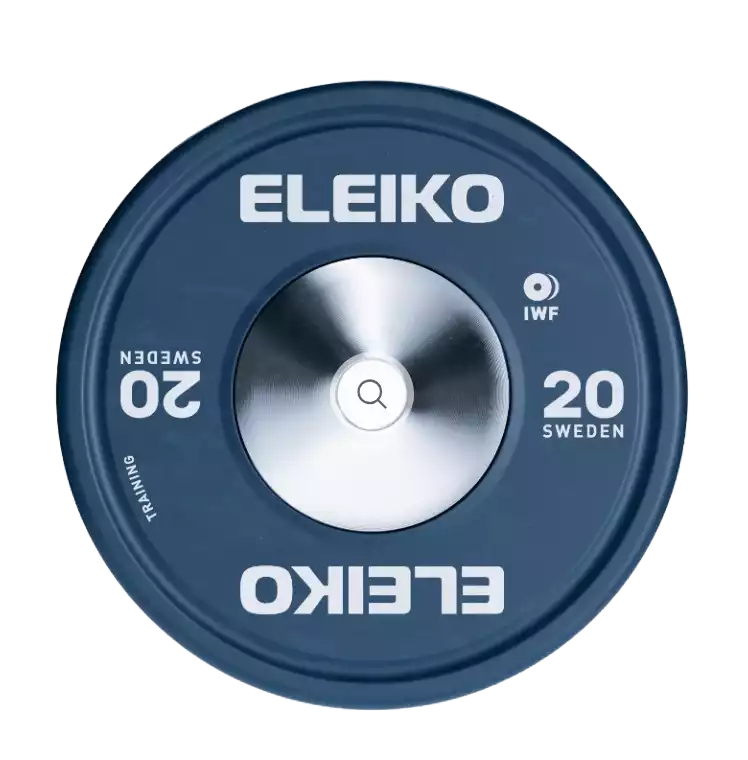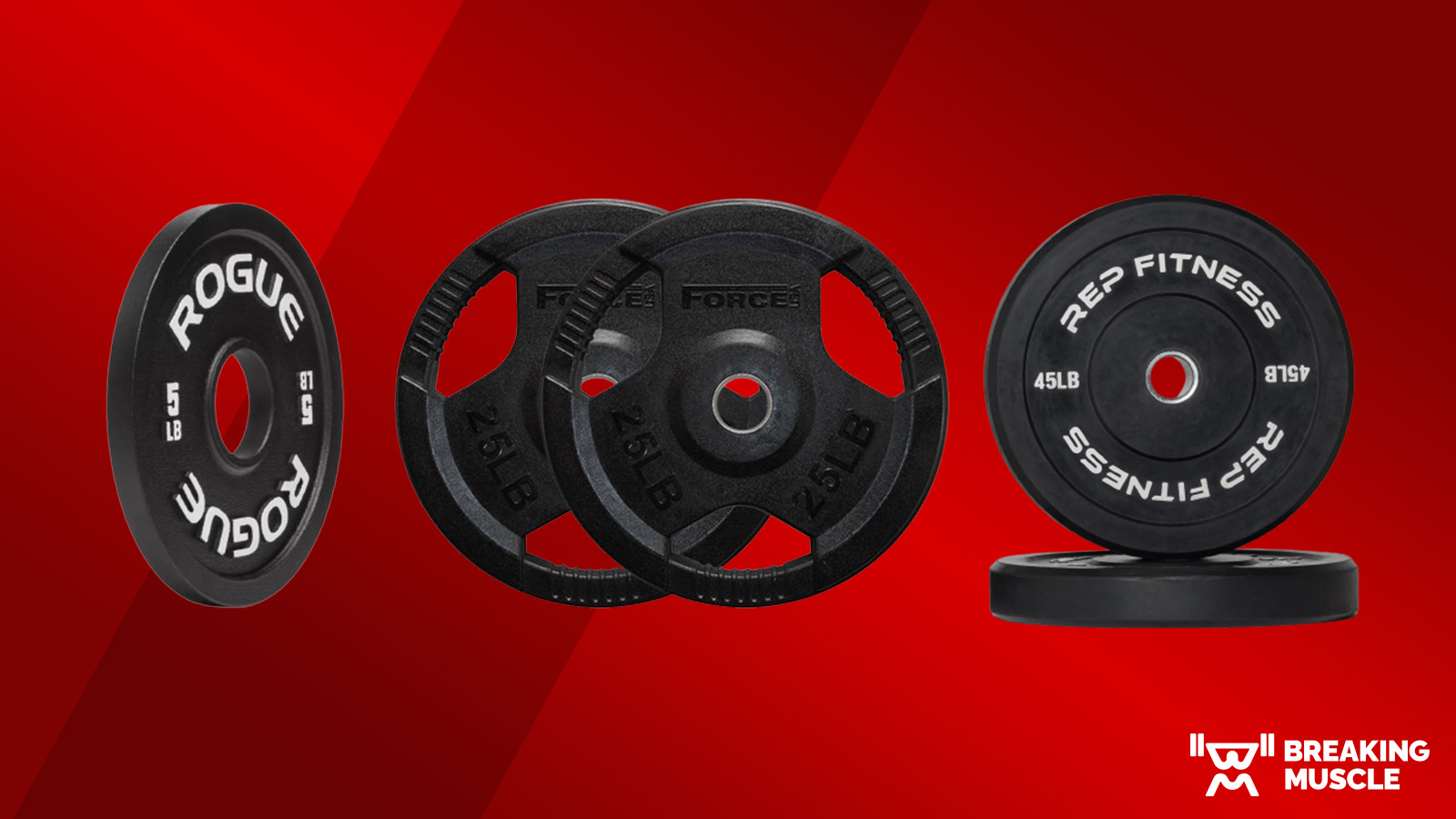
Weight plates are a foundational part of any top-tier home gym environment. If you compete in a strength sport such as powerlifting or Olympic lifting, they are essential for training. Even if you’re a casual lifter or beginner, you should have weight plates in your weight room because you can use different levels of resistance for various exercises to get bigger, stronger, and leaner.
Throughout my more than two decades of training, I’ve used a wide variety of plates, including plates with handles, bumper plates, and everything in between. I know which ones are better suited for different types of training, including powerlifting, CrossFit, Olympic weightlifting, and general strength training. That’s why I created the list of best weight plates below — to help you find the right ones for your style of training.
How We Chose the Best Weight Plates
We chose the plates on this list based on a combination of first-hand experience, research, and customer reviews. Our team members have used the products below in their home or commercial gyms, and we’ve also tried nearly a dozen sets of weight plates in our Breaking Muscle testing facility. We considered different price points, types of training, and training environments to come up with the list below.
Whether you’re looking for bumper plates, cast iron weight plates, or even plates with handles, we committed the time to finding the best of the best. If we wouldn’t want them in our home gyms, we won’t recommend them for yours.
Our Top Picks for the Best Weight Plates
Best Weight Plates Overall: REP Fitness Black Bumper Plates
Pros
- Low bounce
- Contrast lettering allows for easy weight identification
- Can be purchased in pairs or in sets
Cons
- No 55-pound option
- No kilogram option
- Strong smell
The REP Fitness Black Bumper Plates are our top overall pick because of their durability and versatility. The rubber they are made out of can withstand a lot of use and still provide the necessary resistance for your progressive strength workouts. The rubber also allows the plates to bounce when they are dropped because it absorbs the force from the drop, helping to protect your floor from damage.
Bumper plates’ “bounciness” is often determined by a shore A durometer rating that measures the hardness of the rubber on a scale of zero to 100. The higher the score, the less likely the plates will bounce. REP hasn’t disclosed the durometer rating of the Black Bumper Plates but states that they have a low bounce, so we think it’s safe to assume that the durometer rating is somewhere between 80 and 90.
They can be used for Olympic weightlifting, CrossFit, and even beginner-level workouts. Even though the 45-pound plates are thick (2.8 inches), they’re not so thick that they take up excess space on the barbell sleeve. They also won’t take up too much room on a storage rack. (For perspective, 45-pound cast iron plates tend to be around 1.5 inches thick, while some 45-pound bumper plates can be more than three inches thick.)
You can buy REP’s Black Bumper Plates in pairs ranging from 10 to 45 pounds as well as sets ranging from 160 to 340 pounds. The white letters and numbers stand out against the black rubber, giving them a sharp aesthetic and allowing you to easily identify the plates you need.
A bonus point for these REP plates, specifically, is that the 10-pound plates are about an inch thick, whereas other brands’ 10-pound plates are around 0.8 inches. Those other brands discourage dropping a barbell loaded with only 10-pound plates because the plates can bend, which some refer to as “taco-ing.” However, you can drop the REP 10-pound plates, as their thickness makes them less prone to bending.
Best Budget Weight Plates: REP Fitness Old School Iron Plates
Pros
- Thin plates with raised lips make them easier to hold
- Sets up to 425 pounds available
- High-quality matte finish
Cons
- Dropping them is not recommended
- One-sided
- Not machined, may have imperfections
If you want to save money or are shooting for a more hardcore look in your home gym, these REP Fitness Old School Iron Plates fit the bill nicely. The raised lips make the plates easier to hold and load onto your favorite barbell. They’re about half the thickness of bumper plates because they are made of iron, which is denser, so you can load more of them onto the bar.
The REP Fitness Iron Plates range in weight from 2.5 to 45 pounds, and the smaller 2.5- and five-pound change plates allow you to progress more gradually if needed. This is especially helpful on lifts like the overhead press, in which many lifters struggle to make large jumps in weight.
Since the plates aren’t machined, they may have dings, chips, or other small imperfections. This shouldn’t affect their performance, however. They also may potentially collect rust over time, but they are still reliable for general fitness and strength training. Even powerlifters will get good use from them, though they aren’t ideal for CrossFit or Olympic weightlifting since they can’t be dropped. Dropping a barbell loaded with iron plates can ruin your floor, and the metal-on-metal friction can cause excess wear and tear on the barbell.
The REP Old School Iron Plates have a three-percent weight tolerance, meaning their listed weight must be within three percent of their actual weight. This is sufficient for most lifters, but if you want to ensure your weights are more precise, you may want to consider calibrated plates instead. Calibrated plates must be within one percent (or less) of their listed weight.
Best Rubber Weight Plates: Rogue Echo Bumper Plates
Pros
- Have an International Weightlifting Federation (IWF)-standard diameter of 450 millimeters
- Very low bounce
- Sets come with free shipping
Cons
- Heaviest set is 260 pounds
- 10- and 15-pound plates have a short warranty
The Rogue Fitness Echo Bumper Plates range from $45 for 10-pound plates to 260-pound sets for less than $600. This is beneficial for lifters on a budget who want to use rubber plates for exercises such as snatches that may call for the weight to be dropped after each rep. The plates are also ideal for CrossFitters who don’t want to spend a lot of cash, as you can use them for high-rep deadlifts, power snatches, or other barbell movements in your workouts of the day (WODs).
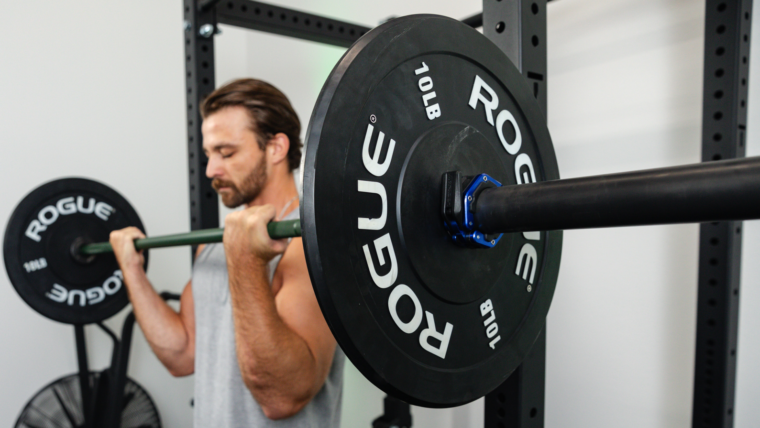
The diameter of these plates (450 millimeters) is equivalent to the specifications set by the International Weightlifting Federation (IWF), though they aren’t the same as the plates you’d use in a competition setting. Competition bumpers are color-coded and are often thinner than training bumper plates. But competitive Olympic weightlifters can still use them in training because they are durable and have a dead bounce. According to Rogue, they have a shore A durometer of 88.
The Echo Bumper Plates are available in 10-, 15-, 25-, 35-, and 45-pound options. The 10- and 15-pound plates only come with a 90-day warranty, but the rest have a three-year warranty.
It’s important to note that the 10-pound plates can’t be dropped when used on their own. They’re only 0.8 inches thick and can bend or crack if they’re dropped. Amanda Dvorak, an editor on the Breaking Muscle team, tested the plates and noted how thin the 10-pounders were in person. You definitely don’t want to go against Rogue’s advice and drop them.
However, the rubber covering makes them suitable for indoor or outdoor workouts. We also like the contrast of white lettering and numbers against black rubber. Amanda commented on the sharpness of this aesthetic and how easy it was to pick out the weights she needed when she tested them for her workouts.
RELATED: Best Squat Racks for Small Spaces, Beginners, and More
Best Iron Weight Plates: Bells of Steel E-Coat Machined Iron Plates
Pros
- Very narrow, so you can fit more plates on the barbell
- Rust-resistant
- Fits snug on two-inch Olympic barbell sleeves
Cons
- Only comes in black
- Letters and numbers are the same color as the plate, which can make it more difficult to identify the weight you need
- Smaller lip than other iron plates
We consider the Bells of Steel E-Coat Machined Iron Plates the best iron weight plates due to their high-quality craftsmanship and durability. The shiny e-coat gives them a sleek, glossy appearance and helps prevent rust. If you train in a non-climate-controlled room such as a shed or barn, this can be very important, as rust can negatively diminish the life of the plates.
Coming in at 0.5 to 1.2 inches thick, these plates are thinner than most competitor plates, which can be more than 1.5 inches thick. You’ll be able to fit more plates on the bar for heavy squats and deadlifts. They fit snugly on the barbell thanks to their 1.99-inch hole diameter (Olympic barbells have sleeves that are around two inches in diameter) and are less likely to shake or bounce while you’re moving the bar. That can help provide smoother reps while you’re performing your sets.
The machined manufacturing process that Bells of Steel utilizes results in plates with a smoother edge that makes them more comfortable to handle. Even though the lip isn’t as deep as it is on other brands’ plates, you can still easily hold onto the plates when loading or unloading the barbell or moving them around your gym.
The plates are available in 2.5 to 45 pounds. The 2.5- to 10-pound plates have a weight tolerance of three percent, and the 25- to 45-pound plates have a weight tolerance of one percent. This means that a 10-pound plate may weigh 9.7 pounds, while a 45-pound plate may weigh 44.55 pounds.
The actual weight will be close enough to the listed weight that most casual lifters won’t notice a significant difference in their workouts. But if you’re a competitive powerlifter, you may want to consider plates with a smaller weight tolerance of 10 grams (0.002 pounds) to ensure your weights are as accurate as possible for your training.
Best Steel Weight Plates: Rogue Calibrated Steel Plates
Pros
- Calibrated for precise weight
- Different colors represent different weights
- Smaller plates available
- Available in pounds and kilograms
Cons
- Higher cost
- May not fit on all barbells
The Rogue Fitness Calibrated Steel Plates are made for heavy training. They’re so thin that you can use them to load up to 1,500 pounds on a traditional Olympic bar — the 55-pound plate is just 27 millimeters (one inch) thick. There aren’t many people training in a home gym that would need that much weight, but you can fit as many plates as you need on the bar with space to spare.
Unlike rubber plates, steel plates are not meant to be dropped, so they aren’t the best choice for Olympic weightlifting. But powerlifters and strength training enthusiasts will appreciate both the color-coded plates and how precise they are. The colors represent universal standards for various weights:
- Red = 55 pounds / 25 kilograms
- Blue = 45 pounds / 20 kilograms
- Yellow = 35 pounds / 15 kilograms
- Green = 25 pounds / 10 kilograms
- White = 10 pounds / 5 kilograms
- Black = 5 pounds / 2.5 kilograms
The Rogue Calibrated Steel Plates are verified to be within 10 grams (0.002 pounds) of the number listed on the plate. If you want to have absolute confidence in the weight you’re attempting to lift, you should opt for calibrated plates like these.
The kilogram plates are approved by the International Powerlifting Federation (IPF), which is considered the top powerlifting league in the world. The pound plates are not approved because the IPF uses kilos to determine weight in competition but are made with the same specifications. Both versions have a 50.4-millimeter collar opening and range from 90 millimeters to 450 millimeters in diameter.
There is a little extra investment that comes with the IPF certification for the kilo plates and the accuracy with which these plates are manufactured. The 45-pound pair costs around $225, but non-calibrated plates of the same weight from other brands cost closer to $150. Fortunately, you can be assured that the Rogue Calibrated Steel Plates will be there for every workout you take part in for the foreseeable future.
Best Urethane Weight Plates: Titan Urethane Bumper Plates
Pros
- Numbers colored differently than plates for easy weight identification
- No odor
- Sold individually, in pairs, or as a set
Cons
- Very thick plates
- May be difficult to clean
Urethane is a combination of rubber and plastic that is much more resistant to damage than other materials used to make plates. Urethane plates like the ones from Titan Fitness can withstand many drops, slams, and bounces that other materials may not.
The Titan Urethane Plates are very durable and would serve Olympic lifters well in training. Even though the colors are vibrant (they utilize the same color standards listed above in our review of the Rogue Calibrated Steel Plates), they have a simple look to them. Still, they do their job effectively and can withstand hundreds of drops. You can use them indoors or outdoors, and the colors shouldn’t fade, nor should the material crack or chip easily.
Furthermore, whether you buy them in pairs or in a full set, you won’t have to deal with the odor that is common with other rubber plates on the market.
They are thick, with the 55-pound plate coming in at 56 millimeters (2.2 inches), compared to steel or iron plates that often top out at about 1.5 inches thick. However, they’re still thinner than other regular bumper plates we’ve seen, which can be over three inches thick. They will take up space on the barbell, which may be a detriment to those who can squat or deadlift 400 to 500 pounds or more. However, this could also be a good thing because the weights can distribute the impact of the drop better than thinner plates.
Interestingly, even though they are supposed to have a dead bounce, Amanda Dvorak (Breaking Muscle’s Reviews Editor) didn’t find that to be the case when she tested them. She loaded a barbell with the 10-kilogram plates and noted that they rebounded pretty high when she dropped the bar from hip height. However, she didn’t test the heavier plates, and it’s possible that they have more of a dead bounce than the lighter ones since they’re thicker.
More durable gym equipment means a greater return on the investment, and that is what you’ll get with the urethane bumper plates from Titan.
RELATED: Best Weight Benches for Beginners, Small Spaces, With Racks, and More
Best Bumper Weight Plates: PRx Crumb Bumper Plates
Cons
- Letters and numbers blend
- Harder to grip
- Very thick
Crumb rubber plates are among the toughest on the market. They are made out of recycled rubber, which can be more durable than virgin rubber, and they shouldn’t cause significant floor damage when they are dropped. Furthermore, they will make less noise than other forms of rubber or iron plates.
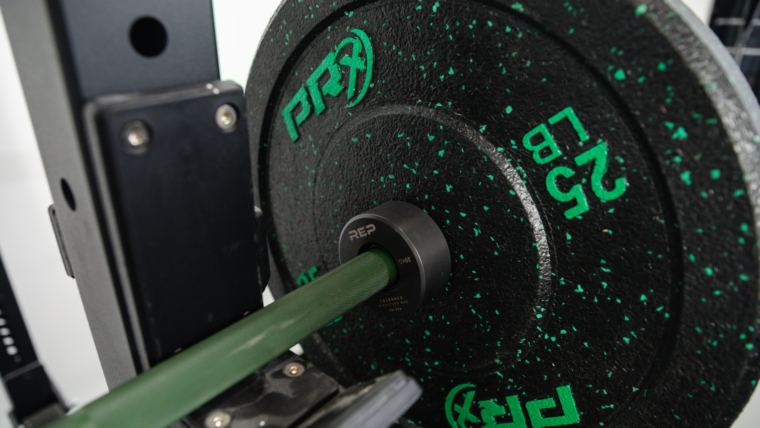
The PRx Crumb Bumper Plates can be used for all levels of training in any environment. They are able to withstand numerous drops from overhead, though you shouldn’t drop a barbell loaded with only the 10- or 15-pound plates. They don’t have the thickness to support that kind of impact on their own.
The thicker plates like the 45’s will likely take up a lot of real estate on the barbell sleeve. PRx hasn’t disclosed the thickness of these plates, but other crumb bumper plates we’ve seen can be as thick as 3.9 inches. PRx’s crumb bumpers appear to be about the same thickness, which doesn’t surprise as since crumb bumper plates usually come from the same manufacturer. However, they provide a snug fit to the barbell sleeve, which will help cut down on the wear and tear of the bar.
You can get the PRx crumb bumper plates in solid black or choose color-flecked plates. They’re made with the same crumb rubber, but the color-flecked plates have little pops of color that correspond to the universal color-coding system described above.
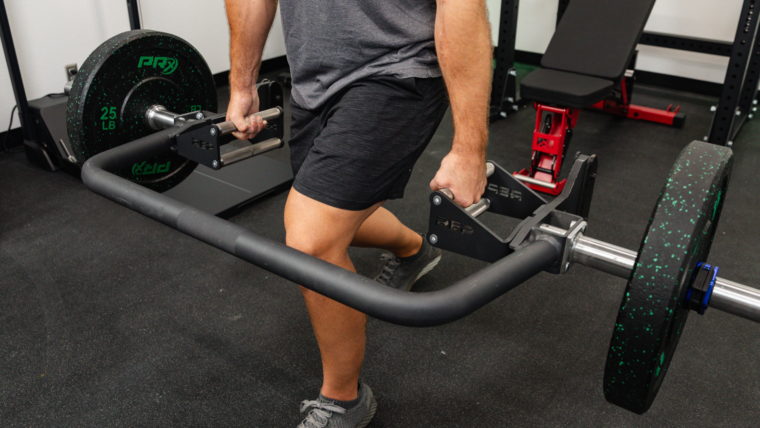
Like all crumb bumper plates, the PRx plates are very bouncy. When Amanda Dvorak (an editor on the Breaking Muscle team) dropped a barbell loaded with the 45s from hip height, it rebounded a couple of inches above her knees. This is important to note if you don’t want your barbell to bounce uncontrollably and damage other equipment in your home gym.
Furthermore, Amanda found the plates to be slippery and difficult to handle when her hands got sweaty. She recommends toweling off your hands before handling the plates if you don’t want them to fall out of your grip.
Crumb rubber plates won’t ever be seen in a sanctioned powerlifting or Olympic weightlifting contest, but if you need big plates for a low price, crumb rubber is the way to go, and PRx has very high-quality products that you can count on for years.
Best Weight Plates With Handles: Force USA Rubber Coated Olympic Weight Plates
Pros
- Multiple handles for easy grip
- Easy to clean
- Rubber coating helps protect against rust
Cons
- Weight tolerance unknown
- Not sold individually
- Hard to read weights
Force USA’s Rubber Coated Olympic Weight Plates are reliable weights and can be used for different exercises without a barbell since they have handles. For example, you can use them for lateral raises or bicep curls. The grip plates also have grooves in the handles to prevent them from slipping from your hands when loading them onto a barbell or storage rack.
They can’t be dropped on the floor like rubber bumper plates, but they would be a wonderful asset for general strength training in a garage gym setting. You can buy them in sets of four for the five- or 10-pound plates; in pairs for the 25-, 35-, or 45-pound plates; or in sets of up to 640 pounds.
The Force USA Rubber Coated Olympic Weight Plates are easy to maintain and care for. If you get chalk or dirt on them, you can simply wipe them with a damp rag and mild dish soap. They are also rust-resistant, making them an excellent option for humid garage or basement gyms. These plates can support you at the beginning of your fitness journey and provide the resistance you need as you get stronger and train harder.
RELATED: Best Trap Bars With Open Designs, Multiple Grips, and More
Best Olympic Plates: Eleiko IWF Weightlifting Training Plate
Pros
- IWF certified
- Competition quality
- Made with SBR, a highly durable synthetic rubber
- Rounded edges and raised lips for easier handling
Cons
- Sold individually
- Not available in pounds
- 10 kilograms is the lowest weight
Eleiko is considered the brand for Olympic lifting, and these training bumper plates are almost identical to those used in International Weightlifting Federation (IWF) competitions. They are certified to be within 0.5 percent of the stated weight, which is among the lowest weight tolerance we’ve seen
They are easy to hold and slide onto the barbell due to their rounded edges and raised lips, and they have a minimal bounce. They can be dropped safely with minimal risk of injury to you or damage to your equipment. Because they’re made with SBR, a synthetic rubber known for its exceptional durability, you can expect them to last for years.
While the Eleiko IWF Weightlifting Training Plates can be used for bodybuilding and general fitness training, they’re a bit overkill for individuals who don’t compete in Olympic weightlifting. They don’t come in pairs, and a single plate can cost more than $400. This is nearly double the cost of competitor plates that are sold in pairs.
Furthermore, they are not available in pounds like the others on this list, as the IWF only recognizes kilograms in competition.
Even though these plates are best for the snatch and clean and jerk, they can also be used for front squats, back squats, push presses, and plenty of other exercises. They don’t come in 2.5- or five-kilogram options, which may make progressive overload (gradual increases in weight) more challenging, but you can find other plates in those weights on Eleiko’s website.
Different Types of Weight Plates
There are various types of weight plates, and the training discipline you follow will determine which are best for you.
Rubber bumper plates are used in many commercial gyms for CrossFit and Olympic lifts. They can serve garage gym owners very well, too, because they can be dropped without the force from those drops damaging the center or outside of the plates, creating holes in the floor, or bending the barbell itself.
Rubber plates can be made from urethane, virgin rubber, or recycled crumb rubber. Crumb rubber is usually more cost-efficient but has a lower durometer rating and, therefore, a higher bounce. Urethane is durable and offers more of a dead bounce because it’s a harder material.
Cast iron or steel weights are more solid, and they are traditionally thinner. While bumper plates can be nearly four inches thick (especially if they are made of crumb rubber), iron and steel weights are usually only a couple of inches thick. That allows you to add more of them to a bar so you can train with more weight. The price point for iron plates is often lower than for rubber plates as well.
You can also find calibrated steel weight plates. They are designed to be within 0.25 percent or 10 grams of the listed weight. This is beneficial for competitive lifters who want to ensure the weights they lift in training are as accurate as possible, so they can feel more confident about their attempts during a meet.
Benefits of Weight Plates
Weight plates can almost be called an essential item on a list of must-have fitness equipment. Plates can be used on Olympic barbells or on specialty bars like trap bars to adjust the weight you’re attempting to lift, allowing you to gradually get stronger over time.
You can even use them as a training tool on their own. Plates with handles can be held and used as a form of resistance for movements such as shrugs, curls, and rows. You could also hold plates without handles with both hands to do exercises such as front raises or Russian twists.
What to Consider When Buying Weight Plates
Training Style and Goals
What training discipline you follow will help you determine the best weight plates to buy. Olympic lifters and CrossFitters should use rubber bumper plates so you can drop your barbell from overhead without causing damage to the plates, the bar, or your floor. However, powerlifters and individuals who don’t plan on dropping their weights may opt for iron or steel plates instead. Because they are thinner, you can add more of them to a barbell.
Durability
If you know that you’ll use your weight plates often, you’ll want ones that will hold up to heavy use, such as urethane rubber plates. If you train outdoors or in a room that isn’t temperature-controlled, look for plates that can withstand hot and cold temperatures and being dropped on concrete. Crumb rubber plates won’t crack or chip easily when used on rough surfaces, but the steel inserts tend to pop out sooner because of how bouncy the plates are. This places more stress on the barbell and the plates, increasing the likelihood of the inserts popping off. Nearly any kind of bumper plate will have rust-resistance capabilities, but if you prefer metal plates, those with a powder coat or e-coat will be less susceptible to damage.
Budget
As with any other endeavor, you want to make sure your hard-earned money is being invested properly. Plates can cost anywhere from $1 per pound to as much as $5 per pound. The material and manufacturing of plates will factor in those costs.
Iron plates used to be much cheaper than bumper plates, as bumper plates have more material. However, the gap has closed within the last couple of years due to an increase in the cost of iron for the manufacturers.
Shipping and the origin of the material can also influence the price. If the materials are sourced from overseas or you live close to a particular brand, you likely won’t spend as much money.
Another thing to consider is whether you want to buy one pair of weight plates at a time or purchase a set with multiple pairs. In our experience, buying them in sets is the most cost-effective option.
It’s important to stay within a financial range you’re comfortable with, but I do suggest that investing in higher quality plates once would be better financially in the long run.
Warranty
If you’re going to part ways with your hard-earned dollars, then you want to know that you’re getting the best return on investment. If something goes wrong, then you should be able to get that money back. Most companies have solid warranties when it comes to gym equipment such as plates, dumbbells, and barbells. Check out those policies before you hit the order button.
Most bumper plates have two or three-year warranties for larger weights with smaller weights (10-15 pounds) having 90-day warranties due to how thin they can be and the likelihood they could suffer damage if dropped on their own. Consider all the above and think about your training environment so you can make the best choice possible.
Bumper Plates vs. Metal Plates
Bumper plates consist of a steel core with a thick rubber covering and are made to be dropped. Lifters consider them a safer option because there’s less risk of damage to your floor if you need to bail a lift. Because bumper plates are thicker, the weight is distributed further across the barbell and further away from your center of gravity. This can make the weight feel easier to lift.
Metal plates have been around for as long as the barbell itself and are traditionally thinner. They can be made out of cast iron or steel. You can’t drop them without the risk of damaging your floor since they don’t bounce like rubber plates. They’re also much noisier than bumper plates, and the noise can disrupt other individuals in your home.
Calibrated vs. Uncalibrated Plates
Calibrated steel or iron plates are certified to be within .25 percent or 10 grams (whichever is less) of the weight listed on the plate. Calibrated plates are used in competitions and are validated before being put on the platform. If the weight is not listed as calibrated, then it’s definitely uncalibrated, meaning it can be anywhere within one to three percent of the weight listed on the plate. A 45-pound plate, for example, may weigh anywhere from 43 to 47 pounds, and you would have to weigh it yourself to know for sure.
Calibrated plates can be a better choice for competitive powerlifters because the weights you lift will be more precise. But since they cost $0.70 or more per pound than uncalibrated plates, most home gym owners who want to save money will be just fine with non-calibrated weight plates.
Weight Range
Bumper plates typically range from 10 to 45 pounds for American weight plates or five to 25 kilograms for international plates. Steel or iron plates can go from 2.5 to 45 pounds or 1.25 to 20 kilograms. Some companies make plates as high as 55 or 100 pounds or 25 or 50 kilograms.
Final Thoughts
The weight plates are a part of the foundation for many home gym owners, and the kind you buy should be a careful decision to make. They are literally the resistance you will use to reach your personal fitness goals. Consider the type of training discipline you follow, your training environment, and your budget when choosing the plates you want to use. The right weight plates can provide the challenges you need to get better for years to come.
Best Weight Plates: Side-by-Side Comparison
Best Weight Plates Overall
Best Budget Weight Plates
Best Rubber Weight Plates
Best Iron
Weight Plates
Best Steel Weight Plates
Best Urethane Weight Plates
Best Bumper Weight Plates
Best Weight Plates With Handles
FAQs
That depends on where you are on your fitness journey and how you intend to train. If you’re a beginner or want to work on strength, then plates with handles on them would be a wise choice. If you’re an advanced trainee and want to challenge yourself with advanced lifts, go with rubber bumper plates.
For most lifters, rubber bumper plates would be the way to go because they can hold up in most training environments. However, some lifters may focus on bodybuilding style training or want plates with a clean look. If that applies to you, then go with iron plates.
If you intend to use a wooden platform or do a lot of lifts from the floor, then you should consider rubber weight plates. If you’re an old-school lifter or want to focus on moves within a squat rack, then metal would be the better option.
When it comes to any version of the bench press, iron or metal plates will be the best option because the plates are more narrow. So, you can add more of them to the barbell. The weight will also feel closer to the hands of the lifter, which may be easier for pressing than if it were distributed widely across the bar as it would with thick, rubber plates.
That is entirely up to the lifter. It’s best to start light and work up as you get stronger. If you can buy a full set that includes all the weights ranging from 2.5 to at least 45 pounds, that would be the best investment so you have them all within one purchase. Once you have the weights with you, start light so you can train without sacrificing form before adding plates to the barbell.

